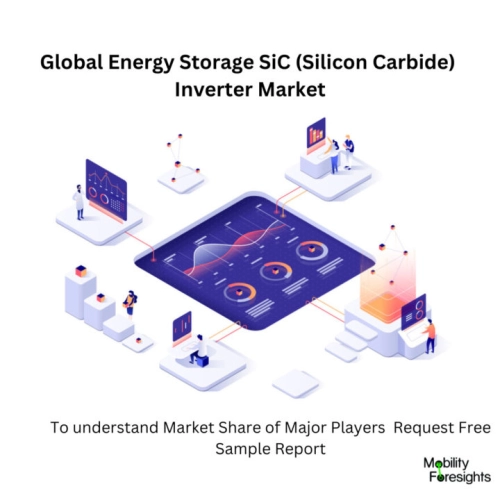
- Get in Touch with Us

Last Updated: Apr 25, 2025 | Study Period: 2023-2030
A more sustainable and effective energy infrastructure is made possible by energy storage. It enables us to balance the grid and lessen dependency on fossil fuel-based power plants by storing excess energy produced during times of low demand and releasing it during times of high need.
The inverter, which transforms the direct current (DC) electricity stored in batteries into alternating current (AC) that may be utilized to power electrical devices, is one of the important elements of energy storage systems. A cutting-edge semiconductor material that has received a lot of interest in the field of power electronics, especially inverters, is silicon carbide (SiC).
SiC is a desirable alternative for energy storage systems because it has a number of benefits over conventional silicon-based gadgets. First and foremost, SiC has greater heat dissipation because to its increased thermal conductivity. SiC inverters can work at greater temperatures thanks to this property, which leads to smaller and more compact designs.
Higher energy efficiency and cheaper costs are the results of the reduced demand for intricate cooling systems due to the enhanced thermal performance.SiC can be used to create inverters with greater voltage ratings due to its higher breakdown voltage. As a result, switching losses are decreased, power density increases, and overall system efficiency is enhanced.
Additionally, SiC devices have lower switching losses than other semiconductors, enabling them to operate at greater switching frequencies, which results in smoother output waveforms and less EMI. SiC inverters' high-frequency capabilities make them ideal for coupling with energy storage systems, which frequently need quick responses and great power quality.
Power flow may be precisely controlled using SiC-based inverters, allowing for smooth integration with renewable energy sources like solar and wind. SiC inverters' higher efficiency and power density improve energy storage systems' overall performance and financial viability.

The global energy storage sic (silicon carbide) inverter market accounted for $XX Billion in 2022 and is anticipated to reach $XX Billion by 2030, registering a CAGR of XX% from 2023 to 2030.
Leading mobility provider DENSO CORPORATION stated that it had created the first inverter ever to use silicon carbide (SiC) semiconductors.
The 4.6 kW coolcept fleX inverter from German PV inverter manufacturer Katek uses silicon carbide (SiC) semiconductors from US-based Navitas Semiconductor. Compared to non-SiC devices, it is lighter and smaller.
| Sl no | Topic |
| 1 | Market Segmentation |
| 2 | Scope of the report |
| 3 | Abbreviations |
| 4 | Research Methodology |
| 5 | Executive Summary |
| 6 | Introduction |
| 7 | Insights from Industry stakeholders |
| 8 | Cost breakdown of Product by sub-components and average profit margin |
| 9 | Disruptive innovation in the Industry |
| 10 | Technology trends in the Industry |
| 11 | Consumer trends in the industry |
| 12 | Recent Production Milestones |
| 13 | Component Manufacturing in US, EU and China |
| 14 | COVID-19 impact on overall market |
| 15 | COVID-19 impact on Production of components |
| 16 | COVID-19 impact on Point of sale |
| 17 | Market Segmentation, Dynamics and Forecast by Geography, 2023-2030 |
| 18 | Market Segmentation, Dynamics and Forecast by Product Type, 2023-2030 |
| 19 | Market Segmentation, Dynamics and Forecast by Application, 2023-2030 |
| 20 | Market Segmentation, Dynamics and Forecast by End use, 2023-2030 |
| 21 | Product installation rate by OEM, 2023 |
| 22 | Incline/Decline in Average B-2-B selling price in past 5 years |
| 23 | Competition from substitute products |
| 24 | Gross margin and average profitability of suppliers |
| 25 | New product development in past 12 months |
| 26 | M&A in past 12 months |
| 27 | Growth strategy of leading players |
| 28 | Market share of vendors, 2023 |
| 29 | Company Profiles |
| 30 | Unmet needs and opportunity for new suppliers |
| 31 | Conclusion |
| 32 | Appendix |